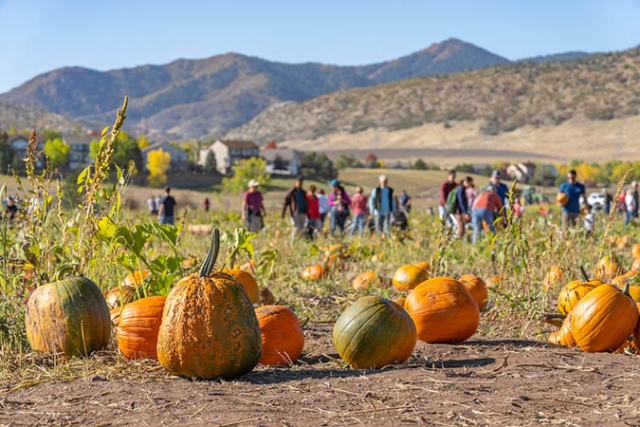The Largest Berry in the World May Not Be What You Think It Is
As the days shorten and we head into autumn, we start seeing pumpkins everywhere – they are used as decorations on stoops and inside houses; they flavor various culinary specialties from pies and soups to lattes and beer; and let us not forget their importance in the competitive sport of punkin’ chuckin’. But what exactly is a pumpkin? Is it a vegetable? Is it a fruit? Or is it simply a decoration for Halloween?
Botanically speaking, a pumpkin is a fruit. And even more specifically, a pumpkin is a type of botanical berry called a pepo. This specialized term is used to describe fruits of the gourd family (Cucurbitaceae), which are modified to have a hard outer rind and lots of seeds, such as squashes, cucumber and watermelon. Pepo derives from the Ancient Greek word, pepon, meaning “large melon.” After many derivatives came the word we use today, pumpkin. However, the term pumpkin has no real botanical or scientific meaning, as all pumpkins are technically squash.

Pumpkin Festival at Chatfield Farms
Pumpkin seeds (called pepitas, meaning “little seeds of squash”) found in Mexico, and dating back to between 7000 and 5500 B.C.E., represent the oldest evidence of squash domestication. This estimate means that the domestication of squash began about 4,000 years prior to that of other crops such as maize and beans. These three crops are not only valued individually for providing food worldwide, but also together comprise the Three Sisters agricultural system – a very important symbiotic agricultural practice in Indigenous cultures.
Since the initial domestication, many varieties of pumpkins have been cultivated and the plants are grown on six of the seven continents. One of the popular pumpkin varieties is known as the Atlantic Giant and is the world record holder for the largest fruit. Grown by Stefano Cutrupi in Italy in 2021, the fruit weighed in at 2,702 lb., which is over 100 times the weight of an ordinary pumpkin.
So, this fall as you cut into pumpkins for your pies, soups or Halloween jack-o’-lanterns, remember the vast and rich botanical and cultural history of our most beloved squash.
Add new comment